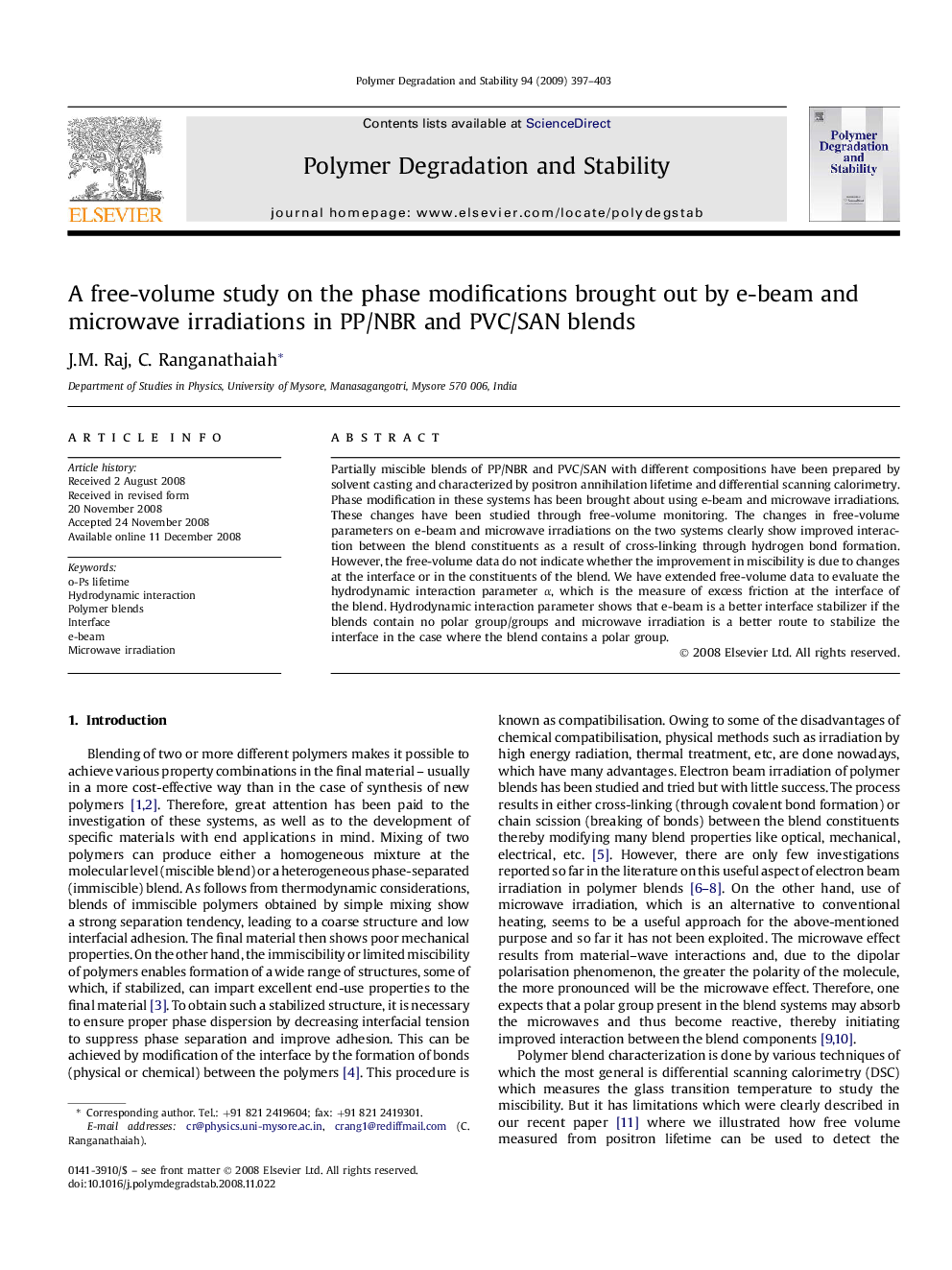| Article ID | Journal | Published Year | Pages | File Type |
|---|---|---|---|---|
| 5203623 | Polymer Degradation and Stability | 2009 | 7 Pages |
Partially miscible blends of PP/NBR and PVC/SAN with different compositions have been prepared by solvent casting and characterized by positron annihilation lifetime and differential scanning calorimetry. Phase modification in these systems has been brought about using e-beam and microwave irradiations. These changes have been studied through free-volume monitoring. The changes in free-volume parameters on e-beam and microwave irradiations on the two systems clearly show improved interaction between the blend constituents as a result of cross-linking through hydrogen bond formation. However, the free-volume data do not indicate whether the improvement in miscibility is due to changes at the interface or in the constituents of the blend. We have extended free-volume data to evaluate the hydrodynamic interaction parameter α, which is the measure of excess friction at the interface of the blend. Hydrodynamic interaction parameter shows that e-beam is a better interface stabilizer if the blends contain no polar group/groups and microwave irradiation is a better route to stabilize the interface in the case where the blend contains a polar group.
